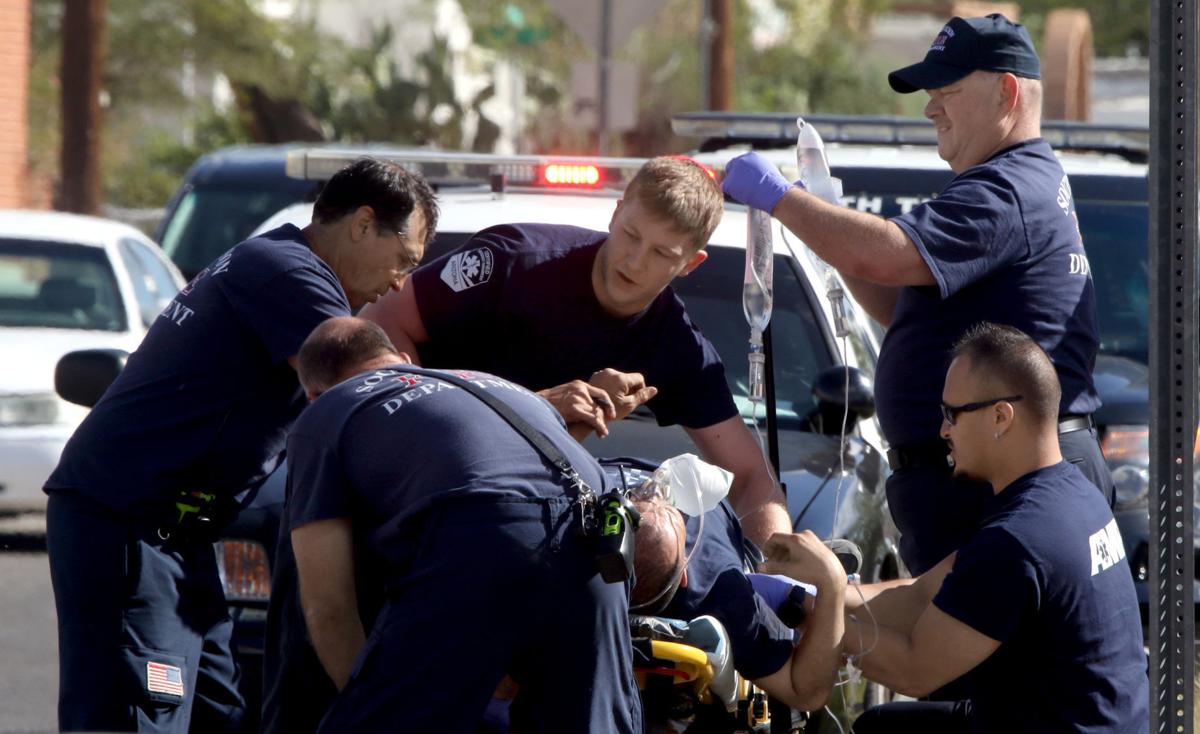The South Tucson Fire Department shouldered some significant cuts last week as city leaders worked to eliminate a projected six-figure budget deficit.
The cuts will require the department to go from a four-person crew on its sole fire engine to three firefighters on the truck beginning as early as next month. The move will save the 1-square-mile city an estimated $145,000 a year but could increase firefighting-related costs for the city of Tucson.
At heart of the problem is the “2 in, 2 out” federal safety standard, which requires that as two firefighters go into a burning building to fight the blaze another two stay outside. Waiting outside the burning building allows the second set of firefighters to be ready to rescue their colleagues in case a wall, floor or ceiling collapses.
South Tucson City Manager Sixto Molina says it was a hard decision for the council, but the city is facing some challenges as revenues continue to dwindle and the cost of daily operations increases.
The cost, for example, to offer health insurance for its employees increased by $58,000 in one year. The city solicited bids from other insurance companies, but those bids would have cost even more.
Other budget-saving measures include not filling positions in the city court and planning office, and leaving two patrol positions in the Police Department open. The council also opted to move to a 30-year payment schedule for its public safety pension plan rather than a 20-year cycle.
Molina says he hopes the city can reinstate four-person fire engine crews next year. “The ideal situation is to have four firefighters on a truck, and that is what we’d like to do,” he said.
Starting next month, South Tucson firefighters at a building fire will have to wait for another engine to arrive from the city of Tucson if they need to enter the burning structure. Time spent waiting could be a few seconds, or it could be several minutes, depending on whether nearby firefighting units are on another call, said Tucson Fire Department Chief Jim Critchley.
The two cities already have an agreement in place requiring Tucson to respond to fires at occupied buildings in South Tucson, but the new staffing levels in the smaller city put additional pressure on Tucson to respond to each fire.
The South Tucson Fire Department relies heavily on retired firefighters and firefighters from other departments to work part-time shifts.
There is no estimate on how much the new policy might add to budget costs of the city of Tucson. However, Critchley said the city will respond with enough firefighters to do the job — with or without the help of South Tucson.
As it happens, the Tucson Fire Department’s dispatch center handles all of the emergency calls for South Tucson as part of a contracted service.
It is not unusual for smaller cities and towns to use three-person engine crews, but they usually have more than one fire station to allow for multiple engines to respond to a structure fire — something South Tucson doesn’t have.
South Tucson responds to one building fire a month on average and multiple medical calls every day.
The National Institute for Occupational Safety and Health estimates that between 80 and 100 firefighters die in the line of duty nationwide every year.
The South Tucson City Council’s cuts in the Fire Department are less severe than what Molina had considered — eliminating the entire department.
Molina said he had made assurances to the Fire Department to increase staffing levels as soon as the cash-strapped city finds a way to increase revenues.
“We are trying to reverse that trend,” he said. “One of our top priorities is to have four firefighters on a truck.”





